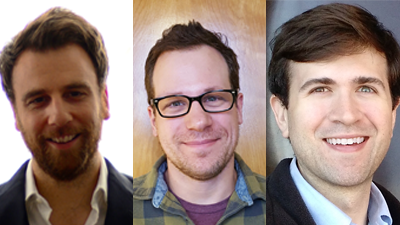Research in Progress: Why do people share fake news on social media?
June 19, 2018

By Toby Hopp, University of Colorado at Boulder
History is full of examples of cynical actors using weaponized false information (or “disinformation”) to achieve political, social and economic ends. So, in a sense, there’s nothing really new about fake news.
And yet, there exists widespread concern about the society-shaping potential of fake news. These anxieties do not feel historic or old or well-worn in character, but instead, fresh, new, and frankly speaking, a bit frightening.
There are at least three contextual factors that distinguish contemporary applications of fake news from those that punctuate the historical record.
First, rapid changes to the global information ecosystem mean that disinformation can travel around the world in a matter of minutes. Lies have always had the ability (and perhaps also the tendency) to rapidly proliferate. The interconnected, digital nature of modern life has allowed for the stimulation of this process in both scope and temporality.
Second, institutional journalism is in a state of decline. Over the past three decades, news organizations have laid off journalists in considerable numbers. The retreat of institutional news –a gatekeeping entity organized around the principles of objectivity – has opened the door to political ideologues and outright bad faith operators who provide anti-factual renderings of contemporary society.
Third, institutional trust is in a state of freefall. There are especially high levels of distrust in the media, which, according to the 2018 Edelman Trust Barometer, is the least trusted social institution globally. Trust in the media is a key predictor of mainstream news consumption. When people don’t trust the news, they are increasingly likely to obtain information from alternative and often factually dubious sources of information.
The above three factors result in a society that is perhaps uncomfortably susceptible to the consumption of disinformation. And so, while fake news is not without historical precedent, the contextual contours of our present reality deem fake news a salient social issue.
Unsurprisingly, scholars have addressed the issue with increasing intensity over the past two years. We know, for instance, that fake news exists in many different forms and is spread predominantly via Facebook. Further, we know that it can have a variety of negative effects, and that these negative effects exert a harmful influence on the society-wide performance of democracy.
Nonetheless, knowledge gaps persist. One such area pertains to our knowledge on the individual attributes of citizens who share fake news on social media. While fake news content is generally created by state actors trying to sow confusion into the electorate or charlatans trying to make a quick buck, its widespread diffusion is predicated upon regular people reading, believing, and ultimately, sharing content on social media.
To learn more about the citizen-level dynamics fueling fake news sharing, Patrick Ferrucci and Chris Vargo, along with myself, have spent the last year working on various projects that attempt to associate individual-level political and social attributes to fake news sharing behaviors on social media. In one such project, we collaborated with Scott Bradley, a senior web application developer at Northwestern’s Medill School, to build a web application that allows us to meld self-report survey data with behavioral data collected from participants’ social media accounts.
The results of this inquiry have allowed us to construct a rough profile of social media users who are most likely to share disinformation on social media. Our initial data suggest that users sharing fake news on social media tend to have low levels of social trust, low levels of trust in the media and are politically extreme.
With support from the Arthur W. Page Center, we intend to build on these initial findings by more systematically examining the relationship between citizen-level attributes and the degree to which fake news is shared on social media.
Specifically, we are in the process of constructing a nationally representative sample of social media users. Using this sample, we will again collect self-report data on institutional and social beliefs and attitudes, especially as they pertain to trust perceptions, and combine this data with people’s real world social media interactions.
One of the unique aspects of our study is the combination of survey and online trace data. By directly observing fake news sharing behaviors, we are able to circumvent issues associated with desirability or recall biases.
We frequently talk about fake news as a sort of pathogen, a viral agent that attacks and degrades democratic functioning. This perspective is not altogether incorrect. Fake news is commonly sensational, lurid and purposefully shocking. It asks us to indulge our worst instincts about others and to embrace extremity and incivility over empathy, compassion and perspective taking.
And yet, we, as citizens, have the ability to squelch the spread of fake news by simply ignoring it. So, why don’t we? That’s the question that we seek to answer with our research.
For further information on this study, email Toby Hopp at tobias.hopp@colorado.edu.
This project was supported by a Page/Johnson Legacy Scholar Grant from the Arthur W. Page Center.

